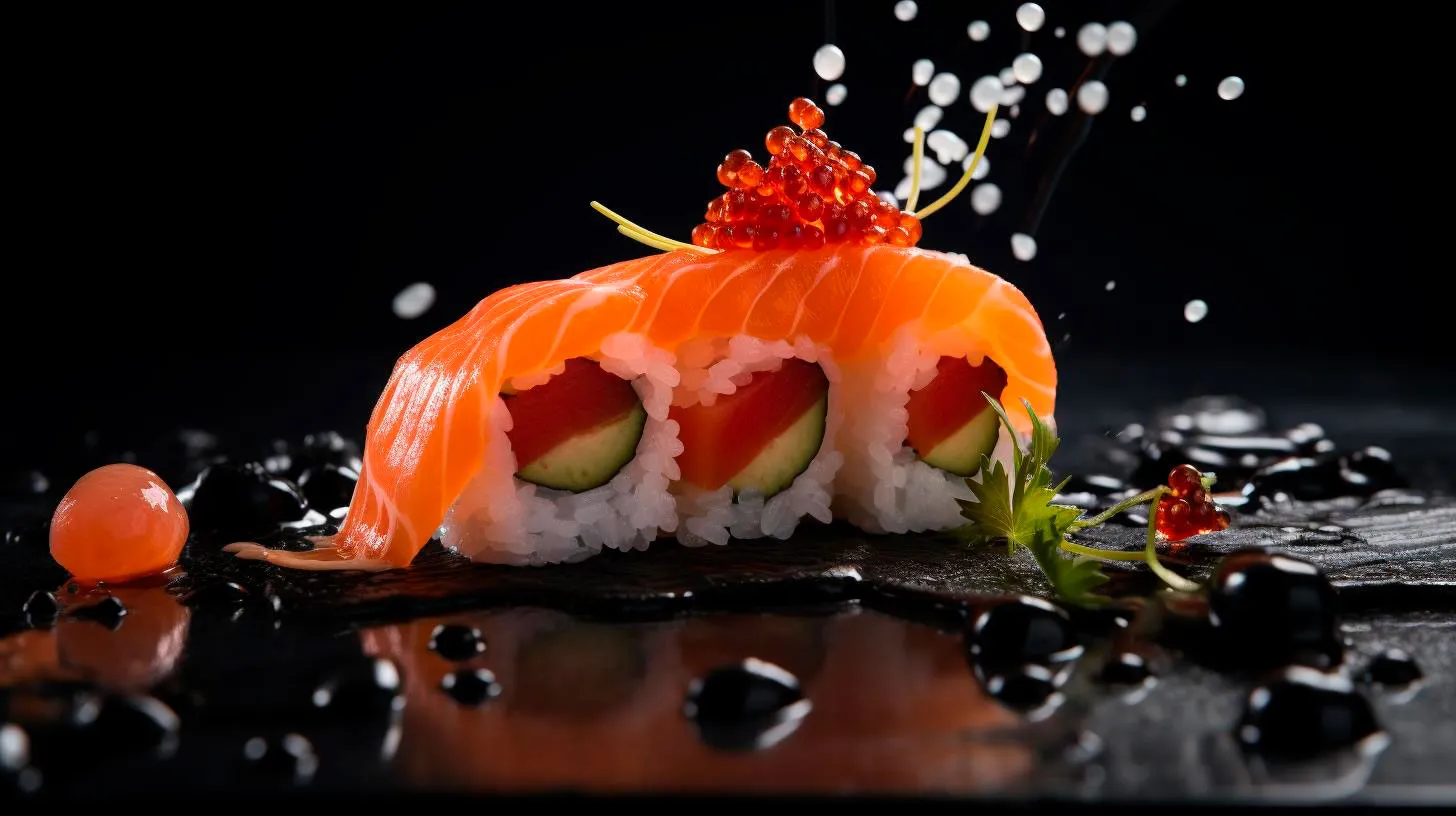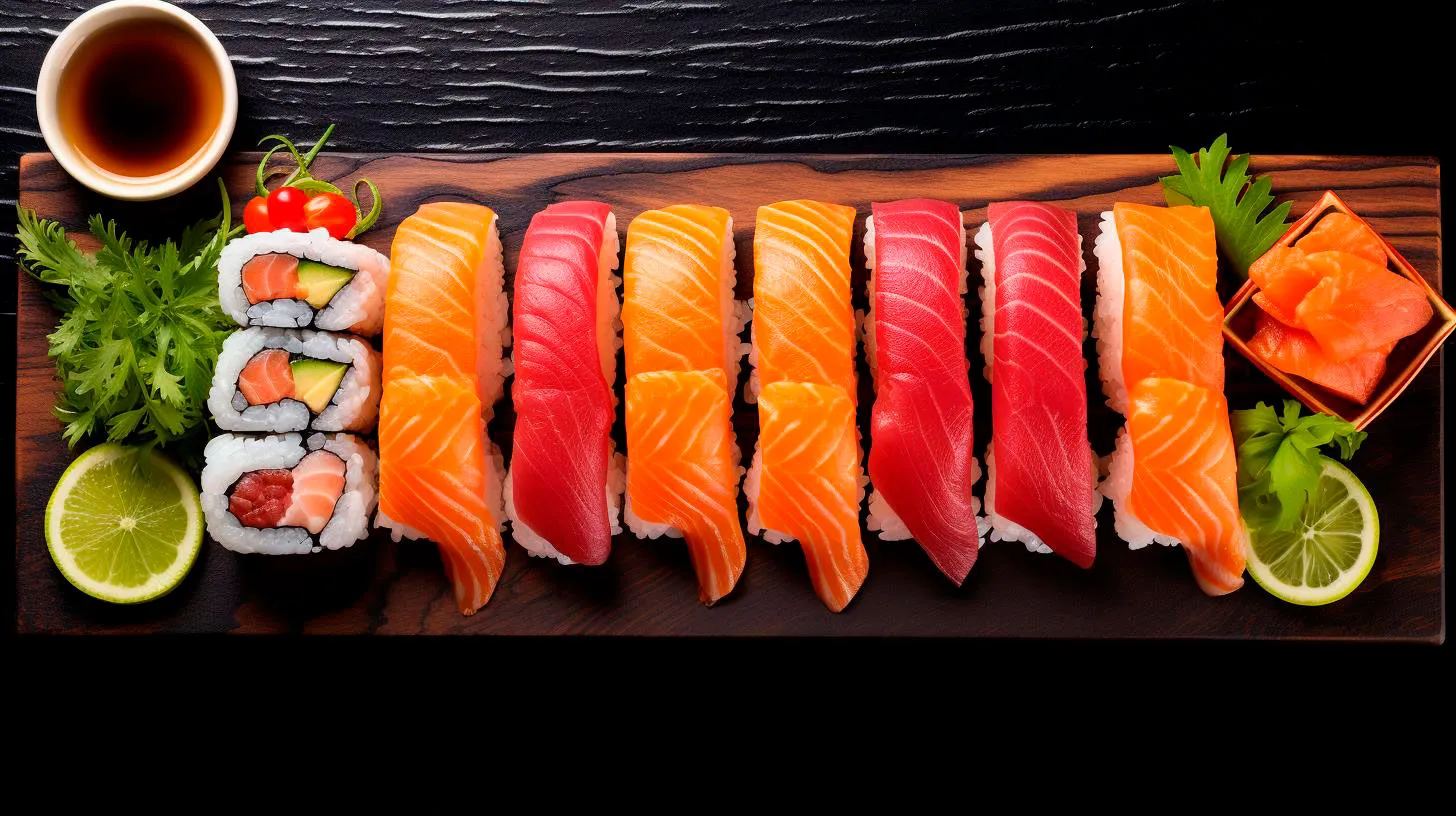Precautions and Safety Measures for Children with Sushi Allergies
Understanding and implementing precautions and safety measures can help protect your child from potential harm. Let’s dive into the details!
Understanding Sushi Allergies
Allergies to sushi ingredients primarily stem from seafood, especially fish and shellfish. Fish like tuna, salmon, and mackerel are commonly used in sushi preparations. The allergenic proteins present in these fish can trigger allergic reactions in sensitive individuals. Additionally, other ingredients like seaweed, soy sauce, and wasabi can also cause allergic responses.
Identifying sushi allergies in children can be challenging, as symptoms may vary from mild to severe. It is crucial to be aware of the signs, which may include:
- Skin reactions such as hives, itching, or swelling
- Respiratory problems like wheezing, difficulty breathing, or coughing
- Gastrointestinal issues such as nausea, vomiting, or diarrhea
- Cardiovascular symptoms like a drop in blood pressure or dizziness
Precautions to Take
When your child has a sushi allergy, taking precautions can safeguard them from potential allergic reactions. Here are some essential measures to consider:
1. Educate Your Child
Teach your child about their sushi allergy and explain the potential dangers. Encourage them to avoid sushi dishes or any suspicious-looking foods that may contain hidden allergens. It is vital for them to understand the importance of cautious eating.
2. Communicate with Restaurants
Inform your child’s school, restaurants, and any other caregivers about their sushi allergy. Emphasize the severity of the allergy and discuss the necessary precautions to prevent cross-contamination during food preparation.
3. Read Labels Carefully
When purchasing sushi or any pre-packaged sushi-related products, carefully read the ingredient labels. Look out for common allergens, such as fish, shellfish, soy, and seaweed. Avoid any items that may trigger an allergic reaction.
4. Be Cautious with Asian Restaurants
While sushi is a popular delicacy, remember that Asian restaurants often use similar ingredients across different dishes. Cross-contamination is possible, so communicate your child’s allergy to the restaurant staff, ensuring ingredients are properly separated and precautions are taken.
5. Consider Alternatives
If your child loves sushi but has a severe allergy, consider exploring alternative options. There are various sushi alternatives available that use non-allergenic ingredients, such as vegetables, cooked proteins, or imitation seafood.
Safety Measures in Case of an Allergic Reaction
Despite all precautions, allergic reactions can still occur. Being prepared can help you handle emergencies effectively. Here are some safety measures to keep in mind:
- Keep antihistamines prescribed by your child’s doctor on hand at all times. These medications can help alleviate mild allergic symptoms.
- Ensure that your child carries an epinephrine auto-injector, commonly known as an EpiPen, if necessary. This device can provide lifesaving intervention during severe allergic reactions.
- Inform teachers, caregivers, and close friends about your child’s allergy and train them on how to use an EpiPen in case of an emergency.
- Teach your child to recognize the signs of an allergic reaction, empowering them to seek help if necessary.
- In case of a severe allergic reaction, immediately call emergency medical services.
Last Words
In conclusion, sushi allergies can pose a significant risk for children with food allergies. By being aware of the precautions and implementing safety measures, you can ensure your child’s well-being and protect them from potential harm. Remember, educating your child, communicating with restaurants, reading labels, being cautious, and considering alternatives are all vital steps in safeguarding their health. Stay vigilant, be prepared, and enjoy sushi with peace of mind!
Understanding Sushi Allergy Risks for Kids and Making Informed Choices
In this article, we will delve into the details of sushi allergies in kids and provide essential information to help you make informed choices for your family.
The Risks of Sushi Allergies
Allergies to sushi can occur when specific ingredients trigger an immune response in a child’s body. The most common allergenic component in sushi is raw seafood, particularly fish. Some children may experience an allergic reaction due to proteins found in fish such as salmon, tuna, or mackerel. Shellfish, including shrimp, crab, and lobster, can also pose an allergy risk. Apart from seafood, imitation crab sticks, which are commonly used in sushi rolls, often contain allergens such as egg whites, wheat, and soy proteins.
It is crucial to note that sushi allergy symptoms can vary from mild to severe and may include:
- Hives or skin rashes
- Swelling of the lips, tongue, or throat
- Difficulty breathing or wheezing
- Nausea, vomiting, or diarrhea
If you notice any of these symptoms after your child consumes sushi, it is important to seek immediate medical attention. While sushi allergies are relatively uncommon, it is essential to be aware of the potential risks, especially if your child has a history of food allergies.
Reducing Sushi Allergy Risks
To minimize the chances of sushi allergies in kids, here are some proactive measures you can take:
- Consult with a pediatrician or allergist before introducing sushi to your child’s diet.
- Start with small portions and observe your child for any adverse reactions.
- Opt for cooked sushi options, such as tempura rolls or veggie rolls, which are generally safer for kids with seafood allergies.
- Inquire about the ingredients used in sushi rolls, especially if your child has additional dietary restrictions, such as soy, gluten, or egg allergies. Sushi chefs and restaurant staff should be able to provide this information.
- Consider avoiding sushi that contains imitation crab sticks if your child is allergic to eggs, wheat, or soy.
- Ensure that the sushi restaurant you visit practices proper food handling and maintains a hygienic environment to prevent cross-contamination.
- Teach your child about their food allergies and how to communicate them to others, including restaurant staff and friends.
Key Takeaways
As parents, it is crucial to balance introducing new foods to our kids with their safety and well-being. Sushi, with its varying ingredients and potential allergens, requires careful consideration. Here are the key takeaways to remember:
- Sushi allergies can be triggered by raw seafood, fish proteins, and imitation crab sticks.
- Allergic reactions to sushi may range from mild to severe, so vigilance is essential.
- Consult a healthcare professional if you have concerns about introducing sushi to your child.
- Opt for cooked sushi options and inquire about ingredients to reduce allergy risks.
- Choose reputable sushi restaurants that prioritize food safety and hygiene.
- Educate your child about their allergies and how to communicate them effectively.
Being aware of the allergy risks associated with sushi and taking appropriate precautions will help ensure a safe and enjoyable culinary experience for your children. By making informed choices, you can introduce sushi to your little ones without compromising their health.
Sources:
- “Food Allergy Facts and Statistics for the U.S.” – Food Allergy Research and Education (FARE)
- “Common Food Allergies in Children” – American College of Allergy, Asthma & Immunology
- “Sushi Allergy” – University of Rochester Medical Center
Tips for Responsible Parents Navigating Sushi Dining with Allergic Kids
However, with the right tips and knowledge, you can ensure a safe and enjoyable dining experience for your child.
Understanding Sushi Allergens
Before delving into the tips, it is important to understand the common allergens present in sushi:
- Fish and Shellfish: Common allergens in sushi include tuna, salmon, shrimp, crab, and other shellfish.
- Soy and Gluten: Some sushi ingredients may contain soy-based sauces or gluten-containing products such as soy sauce or imitation crab meat.
- Other Ingredients: Sushi can also include other potential allergens like sesame seeds, eggs, or certain vegetables.
Now let’s explore some helpful tips to navigate sushi dining with allergic kids:
1. Research Restaurants in Advance
Start by researching sushi restaurants with accommodating options for allergies. Checking their online menus or contacting the restaurant directly can provide insights into their ability to customize dishes to meet your child’s needs. Look for establishments with positive reviews and testimonials from other parents who have had positive experiences.
2. Communicate Your Child’s Allergies Clearly
When visiting a sushi restaurant, clearly communicate your child’s allergies to the waitstaff and chef. Educating them about your child’s specific allergens helps them understand the severity and enables them to suggest suitable dishes or modifications.
3. Opt for Cooked or Vegetarian Options
Consider ordering cooked or vegetarian sushi options to reduce the risk of encountering raw fish or shellfish, which are common allergens. Vegetarian sushi rolls filled with vegetables or tofu can be delicious and safe alternatives.
4. Avoid Cross-Contamination
Cross-contamination can occur when preparing sushi, posing a risk of allergen exposure. Ask the restaurant staff about their practices to prevent cross-contamination, such as using separate utensils and workstations for allergy-sensitive orders.
5. Double-Check Ingredients
When ordering sushi, double-check the ingredients of each dish to ensure your child’s allergens are not present. Pay attention to hidden ingredients like sauces, marinades, or garnishes that may contain allergens.
6. Carry Epinephrine Auto-Injectors
Always carry your child’s prescribed epinephrine auto-injectors when dining out, especially in case of accidental exposure. Discuss with your child and educate them about recognizing symptoms of an allergic reaction and how to use the auto-injector if needed.
Key Takeaways
- Research sushi restaurants in advance to find those accommodating allergies.
- Clearly communicate your child’s allergies to the waitstaff and chef.
- Opt for cooked or vegetarian sushi options as alternatives to raw fish or shellfish.
- Avoid cross-contamination by checking the restaurant’s practices.
- Always double-check the ingredients of each dish.
- Carry your child’s prescribed epinephrine auto-injectors.
By following these tips, you can ensure a safe and enjoyable sushi dining experience for your allergic child. Remember, responsible parents embrace challenges with the right knowledge and proactive measures to keep their children safe and happy.
Recognizing and Managing Sushi Allergies in Children
In this article, we will explore the common symptoms of sushi allergies in children and discuss effective management strategies.
Understanding Sushi Allergies
Sushi allergies typically occur when a child’s immune system reacts negatively to specific ingredients found in sushi. The most common allergen in sushi is seafood, particularly fish and shellfish. These allergies can range from mild to severe, with symptoms appearing shortly after consumption.
Common Symptoms:
- Hives or skin rash
- Swelling of the face, lips, tongue, or throat
- Difficulty breathing
- Chest pain
- Nausea or vomiting
- Stomach cramps
- Diarrhea
If your child experiences any of these symptoms after eating sushi, it is crucial to seek medical attention immediately. Allergic reactions can vary in severity, and prompt action is essential to prevent a potentially life-threatening situation.
Managing Sushi Allergies
While sushi allergies in children can be challenging to manage, there are several strategies that parents can follow to ensure the safety of their child:
1. Allergy Testing:
If you suspect your child has a sushi allergy, consult an allergist for a proper diagnosis. Allergy testing, such as a skin prick test or blood test, can help identify the specific allergens causing the reaction. This information will enable you to take necessary precautions in your child’s diet.
2. Avoidance:
Once the allergens have been identified, it is crucial to avoid exposing your child to those ingredients. While this may seem challenging when it comes to sushi, there are alternatives available. Opt for vegetarian sushi rolls or explore non-seafood options to satisfy your child’s sushi cravings.
3. Educate Others:
Make sure to educate your child’s school, friends, and relatives about their sushi allergy. Encourage them to read food labels carefully and avoid cross-contamination during meal preparation. Open communication and awareness can help minimize the risk of accidental exposure.
4. Carry Medications:
If your child has a severe sushi allergy, it is advisable to carry epinephrine injectors (EpiPens) prescribed by your doctor at all times. These can help alleviate severe allergic reactions and provide temporary relief until professional medical assistance arrives.
Key Takeaways
Sushi allergies can pose significant challenges for children and their families. It is crucial to recognize the symptoms early and take appropriate action. Here are a few key takeaways to remember:
- Sushi allergies in children are often caused by seafood ingredients.
- Symptoms may range from mild to severe, including hives, difficulty breathing, and stomach issues.
- Immediate medical attention is necessary in case of an allergic reaction.
- Allergy testing can help identify specific allergens.
- Avoidance of allergens and educating others is vital for safe management.
- Carry prescribed medication, such as epinephrine injectors, for emergencies.
By following these guidelines, parents can proactively manage sushi allergies in their children, ensuring their safety and well-being while still enjoying a variety of delicious and safe food options.


